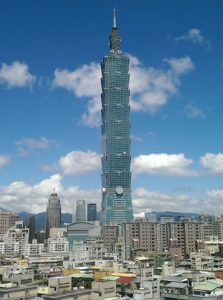
The world shaking, the ground rupturing, the soil underneath your very feet turning into liquid: earthquakes are cataclysmic events. Leveling buildings, initiating tsunamis, and causing landslides, earthquakes oftentimes are the initiating events that lead to monetary and humanitarian loss. A prime example of the devastation initiated by earthquakes is the Fukushima meltdown in 2012, caused by the most powerful earthquake recorded in Japan. The quake initiated a 14-meter tsunami that hit the Fukushima Daiichi Nuclear Power Plant leading to its nuclear meltdown. Similarly, one of the deadliest, third largest earthquakes ever recorded, with the longest duration of faulting ever recorded at 10 minutes was the 2004 Indian Ocean Earthquake and the resulting Tsunami. Initiating in Sumatra, Indonesia, the underwater megathrust earthquake initiated a 30-meter tsunami devastating the countries of India, Sri Lanka, Thailand, and Indonesia killing just under a quarter million individuals.

Fortunately, massive earthquakes like these are fairly rare. Smaller magnitudes, however, while more frequent can still be equally devastating in causing property damage and harming those ill-prepared and unaware. California itself has experienced almost 9,000 earthquakes in the past year alone. With earthquakes such an everyday experience, precautions are employed by architects and engineers in designing earthquake resistant structures. Oftentimes these techniques are employed in megastructures leading to amazing feats of engineering. Examples include the Burj Khalifa in Dubai, Taipei 101 in Taiwan, and the Petronas Twin Towers in Kuala Lumpur.

Many of the techniques involved in mitigating the shear stress imposed by earthquakes require dissipating the horizontal energy applied to these towers. This means having a flexible foundation and adding damping structures. Essentially building these buildings on movable platforms or springs to reduce how much horizontal pressure these structures face. Another common damping method is to just let the tower sway. By using large steel cables, as well as pistons to shield and stabilize the building from vibrations, letting buildings sway like a pendulum helps dissipate some of the earthquake’s energy.
Earthquakes are a massive design problem due to the horizontal pressure they apply to infrastructure. Collapsing buildings cause about 10,000 deaths a year and about $2.1 billion in property damage. However, modern architecture is pushing boundaries of how high we can build on shaking ground.
Peer Editor: Mikayla Feldbauer